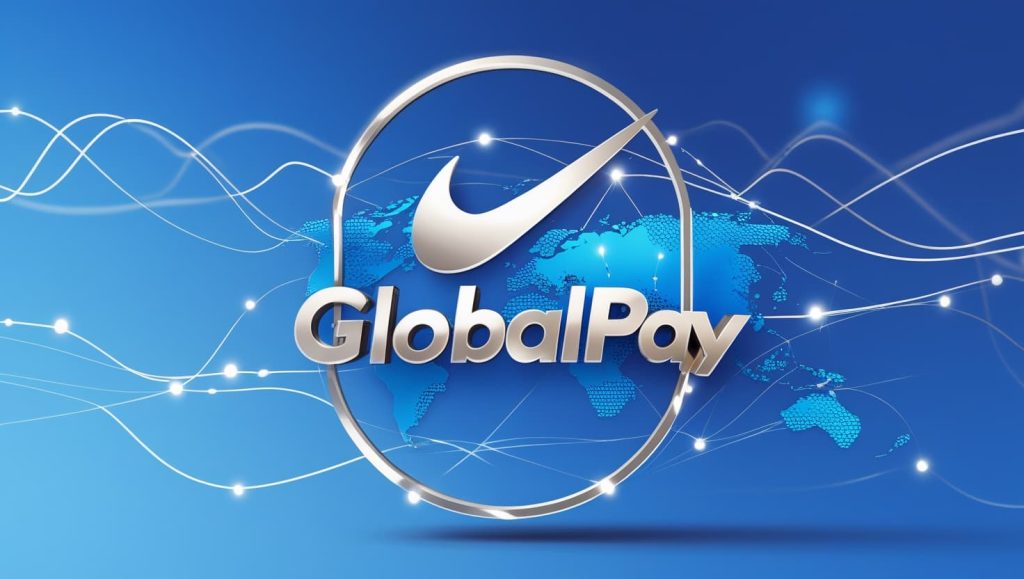Swift (Society for Worldwide Interbank Financial Telecommunications) has long been the backbone of international money transfers, dominating cross-border payments for over 40 years. While its global reach and secure infrastructure remain widely trusted, businesses today are beginning to question whether Swift is still the best option. With increasing demand for faster, more cost-effective, and transparent payment solutions, Swift’s slow processing times, high fees, and limited visibility are becoming major pain points—directly affecting cash flow, financial planning, and global expansion strategies.
The global payments landscape is rapidly evolving. Innovative alternatives powered by banking APIs, fintech platforms, and especially blockchain technology are reshaping how cross-border payments are made. Unlike Swift, blockchain-based payments are borderless, operate 24/7, and enable direct, frictionless transfers between parties—eliminating the need for intermediaries and reducing costs and delays.
In this article, we’ll dive into how Swift works, explore its pros and cons, and uncover why forward-thinking businesses are embracing blockchain and cryptocurrency payment solutions to gain a competitive edge in the global marketplace.
Understanding SWIFT: Why the Global Banking System Needs Alternatives
SWIFT (Society for Worldwide Interbank Financial Telecommunication) serves as the backbone of international banking communication, linking over 11,000 financial institutions across more than 200 countries. It’s widely trusted for its reliability, but as global finance evolves, SWIFT’s limitations have become increasingly apparent—prompting businesses and fintech innovators to explore faster, more efficient alternatives.
✅ Key Benefits of SWIFT:
-
Industry-Leading Security: Trusted by thousands of banks worldwide, SWIFT ensures secure, encrypted messaging for international money transfers.
-
Global Connectivity: With its expansive network, SWIFT enables cross-border transactions to nearly any bank on the planet.
-
Multi-Currency & Multi-Transaction Support: Beyond simple wire transfers, SWIFT handles a range of financial transaction types.
-
Standardized Messaging: Reduces errors and improves communication clarity between global financial institutions.
-
Transaction Traceability: Structured formatting helps banks track payment progress throughout the clearing process.
⚠️ SWIFT’s Limitations:
-
Slow Processing Times: Transactions typically take 3–5 business days—far too slow for today’s fast-paced business needs.
-
High Fees from Intermediary Banks: Payments often pass through multiple banks, racking up unpredictable and costly fees.
-
Lack of Real-Time Transparency: Limited visibility into payment status can create uncertainty and disrupt cash flow planning.
-
Not Ideal for Small Transfers: Fee structures can make SWIFT impractical for small or frequent transactions.
These drawbacks have sparked the rise of next-generation financial solutions—including blockchain-based payment gateways and real-time settlement platforms—that offer speed, transparency, and cost-efficiency.
Looking to stay ahead of the curve? Understanding SWIFT’s pros and cons is essential to choosing the right payment infrastructure for your business.
How Does SWIFT Work? Inside the Global Banking Communication Network
The SWIFT system powers international money transfers by using a standardized messaging protocol and unique identifiers that ensure secure, reliable communication between financial institutions worldwide. Let’s break down how it works.
What is a SWIFT Code (BIC)?
Every financial institution connected to the SWIFT network is assigned a unique identifier called a BIC—short for Bank Identifier Code. Also known as a SWIFT code, SWIFT ID, or ISO 9362 code, this alphanumeric code ensures that transactions are routed correctly between banks across borders.
A typical BIC contains:
-
4 letters for the bank code (institution code)
-
2 letters for the country code
-
2 letters or digits for the location/city code
-
3 optional characters for a specific branch
Examples:
-
HSBC: HSBCHKHHHKH
-
Standard Chartered: SCBLHKHH
-
Bank of China: BKCHHKHH
These codes do more than route money—they also hold key institution data like legal name, registered address, and financial activity type. Financial institutions must verify and update this information annually or whenever changes occur.
Enter SWIFTNet – The Backbone of Secure Financial Messaging
SWIFTNet is the messaging infrastructure that enables standardized, real-time communication between over 11,000 financial institutions in more than 200 countries. It categorizes messages into 10 main types for various banking operations:
-
Customer Payments & Cheques
-
Interbank Transfers
-
Treasury Markets (FX, Derivatives)
-
Cash Letters & Collections
-
Securities Trading
-
Reference Data
-
Commodities Markets
-
Trade Finance & Guarantees
-
Travellers Cheques
-
Cash Management & Customer Status
n. Common Group Messages
SWIFT Messaging Services Explained
SWIFTNet offers four primary messaging services, each designed for specific use cases:
-
FIN: The most widely used service for secure single-message transfers. It supports urgent messaging, delivery notifications, and archives messages for up to 124 days.
-
InterAct: An upgraded, XML-based platform enabling real-time communication and richer data exchange—ideal for systems needing immediate response and comprehensive messaging.
-
FileAct: Built for bulk data transfers like batch payments, reports, and operational files.
-
WebAccess: A secure web-based portal that allows institutions to access financial applications and browse SWIFT-connected tools.
Why It Matters
Understanding how SWIFT works is crucial for anyone involved in international banking or cross-border payments. Its infrastructure enables trillions of dollars to move globally each day—safely and efficiently.
Discover Smarter Global Payments — Explore Our Full Suite of Solutions
Why SWIFT Is the Backbone of Global Business Payments
Before SWIFT revolutionized international money transfers, financial institutions relied on Telex—a slow, error-prone system lacking standardized formats. Today, SWIFT has become the gold standard for cross-border payments, solving those early inefficiencies with secure, reliable, and highly structured messaging protocols.
Standardized Data Formats
SWIFT uses unified data formats like the MT standard and the more modern XML-based MX messages. Now transitioning to ISO 20022, SWIFT enables richer, structured data integration—making it easier for businesses to streamline workflows and connect with third-party systems.
Advanced Security & Reliability
SWIFT’s network is built on a robust Virtual Private Network (VPN), offering best-in-class security through encryption, authentication, data integrity checks, and non-repudiation protocols. This ensures that every transaction is private and protected from end to end.
Innovation in Motion: SWIFT gpi & SWIFT Go
SWIFT is not just maintaining the status quo—it’s innovating rapidly.
-
SWIFT gpi (Global Payments Innovation), launched in 2017, delivers near real-time tracking of cross-border payments using a Unique End-to-End Transaction Reference (UETR). It pre-validates payment instructions, reducing failure rates, and accelerates settlement. Today, gpi powers $300B in daily transactions, with over 96% completed within 24 hours.
-
In 2021, SWIFT Go debuted—designed for small and medium-sized businesses (SMBs) making low-value international transfers under $10,000 in USD, GBP, or EUR.
Beyond payments, SWIFT offers a wide range of value-added services—from compliance tools to analytics and case management systems.
Key Business Benefits of Using SWIFT
✅ One Network, Many Functions
No need for multiple platforms—SWIFT provides a centralized hub for all cross-border payment needs, dramatically cutting operational costs.
✅ Lightning-Fast Transactions
With straight-through processing and real-time routing, SWIFT slashes settlement times from days to minutes—boosting liquidity and cash flow efficiency.
✅ Full Transparency
Track payment status in real time and see all fees upfront. SWIFT’s transparency reduces payment disputes and speeds up resolution.
✅ Trusted by the Global Financial Ecosystem
With over 44 million messages processed daily and a 40-year track record, SWIFT is a name synonymous with trust and reliability. Its continual innovation proves its commitment to meeting the evolving needs of global businesses.
In a digital-first world, SWIFT isn’t just keeping up—it’s leading the way.
Ready to Accept USDT Like a Pro? Set Up Your Secure Tether Gateway Today
Key Challenges of the Swift Payment Network for Businesses
Despite its global reach, the Swift payment system—originally developed over 40 years ago—presents several challenges for today’s businesses and financial institutions. While recent updates have added features, Swift remains outdated in key areas, often leading to higher costs, longer settlement times, and inefficient manual processes. These issues can directly affect business competitiveness and strain cash flow.
The true impact of Swift’s limitations varies depending on transaction volume, currency diversity, operational regions, and access to tech resources. Here are the major pain points businesses face when using Swift for international payments:
-
Lack of Fee Transparency
Swift transactions often involve multiple banks, each applying its own fee structure. As a result, businesses are frequently unaware of the final costs until after the transaction is complete—complicating reconciliation and making financial planning difficult. -
Slow Settlement Times
Swift is notoriously sluggish. Transactions may take up to five business days, especially when routed through intermediary banks. Additional delays can stem from fraud detection protocols that slow down processing even further. -
Systemic Vulnerabilities
Swift relies on a complex global network of financial institutions. Any operational disruption at one point in the chain—whether technical, human error, or compliance-related—can delay or halt a payment entirely. -
Technical Complexity & High Integration Costs
Unlike modern APIs or fintech platforms, Swift is not plug-and-play. It requires substantial technical setup, ongoing maintenance, and costly integration with in-house financial systems. These costs are often passed down to end users, reducing the appeal for growing businesses. -
Political Oversight & Restrictions
Swift is governed by the G-10 central banks, meaning its accessibility is subject to geopolitical influence. Sanctioned countries like Russia, Iran, and North Korea are excluded from the network, demonstrating how global politics can disrupt access for institutions and their customers.
For businesses seeking faster, more transparent, and cost-effective cross-border payment solutions, understanding these limitations is crucial. As fintech innovations evolve, many companies are exploring modern alternatives to Swift that better align with today’s digital economy.
Best International Payment Solutions for Global Businesses (2025)
Managing international payments efficiently, securely, and cost-effectively is critical for businesses operating across borders. In this comprehensive comparison, we explore the top global payment solutions—ranging from all-in-one platforms like Papaya Global to blockchain-powered alternatives such as RippleNet and Stellar. Whether you’re paying global contractors or streamlining cross-border payroll, here’s everything you need to know.
1. Papaya Global: A Complete Workforce Payment Solution
Papaya Global is a top-tier global payroll and payment platform designed for businesses managing distributed teams.
🟢 Key Benefits:
-
🌍 Global Reach: Real-time payments in over 160 countries—faster and cheaper than traditional SWIFT transfers.
-
✅ Built-In Compliance: Automatically handles local tax laws and regulatory requirements.
-
💡 Full Transparency: No hidden fees, with complete transaction tracking.
-
🔗 Easy Integration: Connects seamlessly with existing payroll and accounting tools.
-
🔐 Enterprise-Grade Security: Exceeds industry standards for data protection.
📌 Best For: Companies with international employees or contractors seeking an all-in-one global payroll and payment solution.
⚠️ Considerations:
-
Requires more upfront setup due to its comprehensive features.
-
May be too robust for companies needing only occasional, one-time international payments.
2. Domestic Payment Networks: ACH, SEPA, and Faster Payments
Domestic payment systems like SEPA (EU), ACH (US), and Faster Payments (UK) offer efficient options for cross-border payments—when both sender and recipient are within supported regions.
🟢 Pros:
-
💰 Lower Transaction Costs: More affordable than SWIFT, especially for recurring payroll and vendor payments.
-
📦 Batch Processing: Ideal for sending multiple payments at once.
-
🤝 Bank-Friendly: Works smoothly with existing banking systems.
-
🗂 Standardized Formats: Especially within the SEPA zone.
⚠️ Limitations:
-
🌍 Limited Reach: Not suitable for truly global payments.
-
🧩 Compatibility Issues: Lack of cross-border standardization.
-
⏱ Inconsistent Speed: Transfers may slow when networks don’t interconnect.
-
🔒 Regional Constraints: Both parties must hold accounts in supported regions.
3. RippleNet: Blockchain-Based Payments with Banking Integration
RippleNet offers a next-generation alternative to SWIFT using blockchain technology for fast and transparent cross-border payments.
🟢 Advantages:
-
⚡ Near-Instant Settlements: Transfers clear in seconds.
-
💸 Low Fees: Ideal for high-volume corridors.
-
🔎 Transparent Ledger: Enhanced visibility across transactions.
-
🏦 Institutional Partnerships: Works with established banks and financial networks.
⚠️ Drawbacks:
-
🧭 Limited Global Adoption: Not yet as widely accepted as SWIFT.
-
⚖️ Regulatory Uncertainty: Especially in regions with unclear crypto laws.
-
🚧 Technical Barrier: Setup requires some blockchain expertise.
-
📉 XRP Volatility: Associated token may raise compliance concerns.
4. Stellar & Bitcoin Lightning Network: High-Speed Blockchain Transfers
Both Stellar and the Bitcoin Lightning Network cater to niche needs in the international payment ecosystem—especially in underbanked regions.
🟢 Stellar Highlights:
-
🌐 Fast, Low-Cost Transfers: Great for developing markets.
-
🔄 Cross-Currency Exchange: Through tokenized asset bridging.
-
🙌 Financial Inclusion Focus: Designed to reach the unbanked.
-
💸 Supports Microtransactions: Cost-efficient for small-value transfers.
🟢 Bitcoin Lightning Benefits:
-
⚡ Instant Payments: Settles in seconds with minimal fees.
-
💻 Ideal for Small Transactions: Where banking fees make traditional methods impractical.
-
🔐 High Security: Built on the Bitcoin blockchain.
-
🛍️ Growing Ecosystem: Used by online retailers and digital services.
⚠️ Shared Limitations:
-
🚫 Limited Institutional Integration: Not widely adopted by mainstream banks.
-
🧠 Technical Complexity: Can be a hurdle for small businesses.
-
⚖️ Uncertain Regulation: Varies by region.
-
📉 Token Volatility: Could impact payment stability.
5. CIPS: China’s Cross-Border Interbank Payment System
CIPS is China’s strategic alternative to SWIFT, tailored for yuan-denominated international trade.
🟢 Pros:
-
🀄 Direct Yuan Settlements: Avoids SWIFT fees for China-related payments.
-
💵 Lower Costs: For businesses trading with Chinese entities.
-
🕒 Faster Processing: Speeds up yuan transactions.
-
🌏 Regional Growth: Expanding among Belt and Road countries.
⚠️ Cons:
-
💱 Currency-Specific: Primarily supports Chinese yuan.
-
🌐 Limited Global Reach: Far less widespread than SWIFT.
-
🏛 Centralized Oversight: May raise sovereignty concerns.
-
❔ Limited Governance Transparency.
6. FedNow & Instant Payment Systems
Emerging instant payment networks like FedNow (U.S.) represent a future-forward approach to global transfers—though they’re still domestically focused.
🟢 Strengths:
-
⏩ Real-Time Domestic Transfers: Completed within seconds.
-
💲 Low Fees: Affordable alternative to wire transfers.
-
🛡 Central Bank Backing: Trusted regulatory oversight.
-
🧱 Future Infrastructure: Could support international rails.
⚠️ Weaknesses:
-
🗺 Domestic Scope: Not yet available for cross-border payments.
-
🤝 Coordination Challenges: International adoption requires alignment between countries.
-
⌛ Long-Term Play: Not an immediate solution for global businesses.
7. Visa B2B Connect & Mastercard Cross-Border Services
Card networks like Visa and Mastercard offer robust, fast, and secure B2B international payment services.
🟢 Advantages:
-
🕒 Fast Settlement: Often same-day or next-day.
-
🏦 Bank-to-Bank Transfers: Reduces intermediary steps and costs.
-
🔐 Strong Security: Backed by leading fraud prevention tools.
-
💬 Transparent Fees: Clear pricing with fewer surprises.
-
⚙️ Familiar Infrastructure: Many businesses already integrated.
⚠️ Disadvantages:
-
💸 Higher Fees for Large Payments: Less cost-effective for high-value transactions.
-
🔁 Limited Customization: Compared to platforms like Papaya or Ripple.
-
🌐 Geographic Gaps: Coverage varies by region and partner banks.
-
🔗 Dependent on Bank Networks: Requires specific financial institutions.
8. Central Bank Digital Currencies (CBDCs): The Future of Cross-Border Payments?
CBDCs are government-issued digital currencies that could revolutionize international money transfers—though they’re still in early development.
🟢 Potential Benefits:
-
🔄 Direct Cross-Border Transfers: Without intermediaries.
-
💰 Reduced Costs & Delays: Potentially faster and cheaper than SWIFT.
-
🔐 Regulatory Trust: Government-backed for enhanced legitimacy.
-
🌍 Global Movement: Initiatives underway in China, EU, and the U.S.
⚠️ Current Limitations:
-
🚧 Pilot Stage: Most CBDCs are not yet live.
-
🔗 Lack of Interoperability: Global coordination is still a challenge.
-
📉 Sovereignty Concerns: Cross-border usage raises policy questions.
-
🛠 Frameworks Under Construction: Governance and technology still evolving.
Conclusion
From enterprise-ready platforms like Papaya Global to innovative blockchain options like RippleNet and Stellar, businesses now have more choices than ever for managing international payments. The right solution depends on your company’s needs—whether that’s regulatory compliance, transaction speed, geographic coverage, or payment volume.
Optimize your global operations by selecting the right international payment platform for your use case—whether you’re scaling globally, paying remote contractors, or seeking to lower costs.




